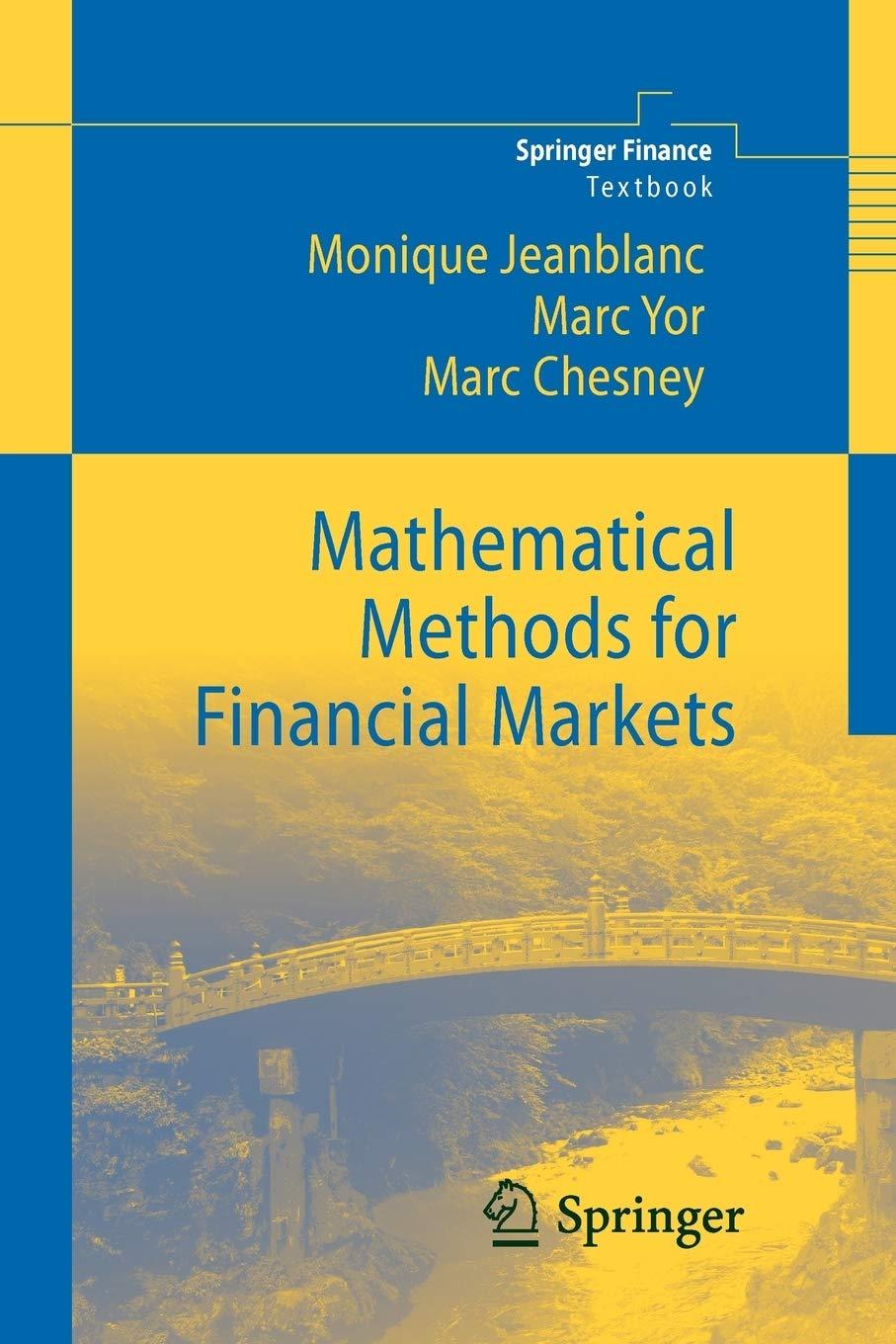(1) Let (B) be a Brownian motion, and define the probability (P^{b}) via [left.mathbb{P}^{b} ight|_{mathcal{F}_{T}}:=left.exp left{-b int_{0}^{T}...
Question:
(1) Let \(B\) be a Brownian motion, and define the probability \(P^{b}\) via
\[\left.\mathbb{P}^{b}\right|_{\mathcal{F}_{T}}:=\left.\exp \left\{-b \int_{0}^{T} B_{s} d B_{s}-\frac{b^{2}}{2} \int_{0}^{T} B_{s}^{2} d s\right\} \mathbb{P}\right|_{\mathcal{F}_{T}}\]
Prove that the process \(\left(B_{t}, t \geq 0\right)\) is a \(\mathbb{P}^{b}\)-Ornstein-Uhlenbeck process and that
\[\mathbb{E}\left(\exp \left(-\alpha B_{t}^{2}-\frac{b^{2}}{2} \int_{0}^{t} B_{s}^{2} d s\right)\right)=\mathbb{E}^{b}\left(\exp \left(-\alpha B_{t}^{2}+\frac{b}{2}\left(B_{t}^{2}-t\right)\right)\right),\]
where \(\mathbb{E}^{b}\) is the expectation w.r.t. the probability measure \(\mathbb{P}^{b}\). One can also prove that if \(B\) is an \(n\)-dimensional BM starting from \(a\)
\[\begin{gathered}
\mathbb{E}_{a}\left(\exp \left(-\alpha\left|B_{t}\right|^{2}-\frac{b^{2}}{2} \int_{0}^{t}\left|B_{s}\right|^{2} d s\right)\right) \\
=\left(\cosh b t+\frac{2 \alpha}{b} \sinh b t\right)^{-n / 2} \exp \left(-\frac{|a|^{2} b}{2} \frac{1+\frac{2 \alpha}{b} \operatorname{coth} b t}{\operatorname{coth} b t+2 \alpha / b}\right), \end{gathered}\]
where \(\mathbb{E}_{a}\) is the expectation for a BM starting from \(a\).
(2) Use the Gaussian property of the variable \(B_{t}\) to obtain that \[\mathbb{E}_{\mathbb{P}}\left(\exp \left(-\alpha B_{t}^{2}-\frac{b^{2}}{2} \int_{0}^{t} B_{s}^{2} d s\right)\right)=\left(\cosh b t+2 \frac{\alpha}{b} \sinh b t\right)^{-\frac{1}{2}} .\]
If \(B\) and \(C\) are two independent Brownian motions starting form 0 , prove that \(\mathbb{E}_{\mathbb{P}}\left(\exp \left(-\alpha\left(B_{t}^{2}+C_{t}^{2}\right)-\frac{b^{2}}{2} \int_{0}^{t}\left(B_{s}^{2}+C_{s}^{2}\right) d s\right)\right)=\left(\cosh b t+2 \frac{\alpha}{b} \sinh b t\right)^{-1}\).
(3) Deduce Lévy's area formula:
\[\begin{aligned}
\mathbb{E}\left(\left.\exp i \lambda \mathcal{A}_{t}|| Z_{t}\right|^{2}=r^{2}\right) & =\mathbb{E}\left(\exp -\left.\frac{\lambda^{2}}{8} \int_{0}^{t}\left|Z_{s}\right|^{2} d s|| Z_{t}\right|^{2}=r^{2}\right) \\
& =\frac{t \lambda / 2}{\sinh (t \lambda / 2)} \exp -\frac{r^{2}}{2}(\lambda t \operatorname{coth} \lambda t-1), \end{aligned}\]
where \[\mathcal{A}_{t}:=\frac{1}{2} \int_{0}^{t}\left(B_{s} d C_{s}-C_{s} d B_{s}\right)=\frac{1}{2} \gamma\left(\int_{0}^{t}\left(B_{s}^{2}+C_{s}^{2}\right) d s\right)\]
where \(\gamma\) is a Brownian motion independent of \(|Z|^{2}:=B^{2}+C^{2}\)
Step by Step Answer:

Mathematical Methods For Financial Markets
ISBN: 9781447125242
1st Edition
Authors: Monique Jeanblanc, Marc Yor, Marc Chesney





